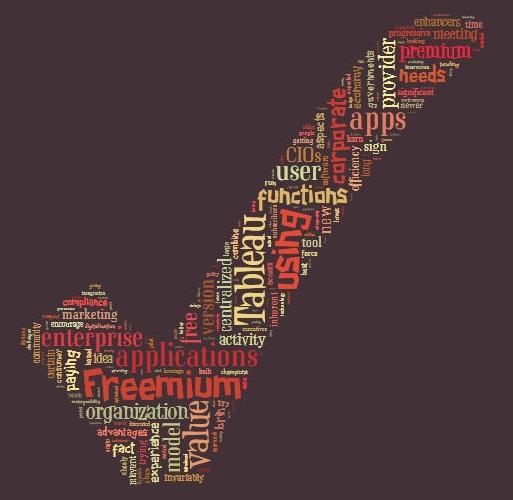
With digitalization of the business, technology is now expected to do much more than just bring in efficiency. It is touching all aspects of business and is closely interwoven with many business functions and activities. The centralized approach of manufacturing economy is proving to be grossly ineffective to adequately meet the new business needs.
Corporate IT, however, is still centralized—a legacy of the older economy—and is facing the same challenges. It is trying to keep pace with the business. However, because of many inherent advantages—such as efficiency of enterprise processes, manageability, better enforcement of corporate governance and compliance and easier budget control—the model is not going anywhere in the near future.
The idea, for the progressive CIOs, is then, to, combine these inherent advantages, with the newer value enhancers and provide an optimized business value to the organization. Freemium model of software applications is such a new value enhancer, which has become a significant force. It has long been ignored by the corporate IT.
To be sure, the premium model owes its origin, to consumer applications such as games where the user is introduced to an app by giving him free access to use a version of it for which he does not have to pay anything. But to access certain features, he needs to sign up by paying a fee. So, there is a free version and there’s a premium version. The name, freemium, is a combination of the two.
With online apps, this has become the most important model. The provider gets to showcase the capabilities of the apps to anyone who is interested, without any strings attached. And invariably, the customer signs up voluntarily, when he wants to sign up. There is no demo; there’s no pilot. It is the actual app and there’s usually no time period.
In the typical consumer apps, many providers run it like a media business, with premium subscribers subsidizing the free subscribers. In B2B applications, which are becoming a significant force, the free version becomes an excellent marketing tool.
Initially, many rejected the idea that freemium would ever become relevant in a corporate environment, unless it is for too niche activity. But the success of a few such applications is making the skeptics take notice. Take the case of Tableau. In the enterprise BI space, it is applications like IBM (Cognos), Oracle (Hyperion), SAP (Business Objects) and SAS that ruled. But ask any major enterprise CIO evaluating BI and analytics tool these days, and Tableau is invariably in the list. Two years back, Tableau was not on the radar of CIOs, though it was being used by certain communities extensively. NGOs, governments, data journalists, some marketing agencies have been using Tableau for quite some time. And most of them got hooked to it by using Tableau Public first. This large user base of very mature and demanding users has made Tableau not just a robust piece of software but arguably among the best in user experience. Though each application has some USP in its own way, the fact that Tableau has not just become relevant but even mainstream just underlines the fact that the “enterprise-class” as a catch phrase has been over emphasized.
While Tableau may be a little ahead, many other such apps who started targeting the functional professionals are finding traction at the enterprise level, thanks to the reputation that they have built across a large group of people, many of who have used these for free.
In short, freemium as a model for enterprise apps is here to stay and grow. In fact, they are the basis on which the concept of frugal IT rests.
So, how do you ride on it rather than resist it?
Here are a set of best practices for corporate IT, based on lessons from progressive CIOs and functional (mostly marketing) executives.
- Collaborate, not compete. Those executives that are using freemium tools are doing that because they see some value in it that they do not get anywhere else. Many of them would be looking at getting into the next paying version. Take inputs from their seniors and encourage them to use if they see value in it.
- Learn why they are using it. Why are they taking all the trouble to use it? What is so good about the app? Or what is the need that the existing IT is not meeting? Do you see a pattern among different such users spread across functionalities, locations?
- Identify the champions and leverage them. Everyone loves recognition. People love ownership even more. If someone is using it well, others in the organization should learn. Be the facilitator. They will always respect you for that. And the organization will benefit.
- Teach them what’s essential. While newer applications that are built around real user needs bring in a lot of business value, using them for critical functions means compliance and integration with other applications have to be taken care of. Many users may not be explicitly looking at those aspects while selecting an app. Encourage them to use but apply those filters. Many may be a bit reluctant but will respect you for that in the long run.
- Work towards a freemium policy. If you find it is becoming too mainstream, tackle it proactively. Create a freemium policy that should ultimately integrate with your core IT, without trying to centralize.
And finally, share your experience. As a community leader, help others leverage this new wave. Share your experience; take feedback. Champion frugal IT.

 In
In
Add new comment